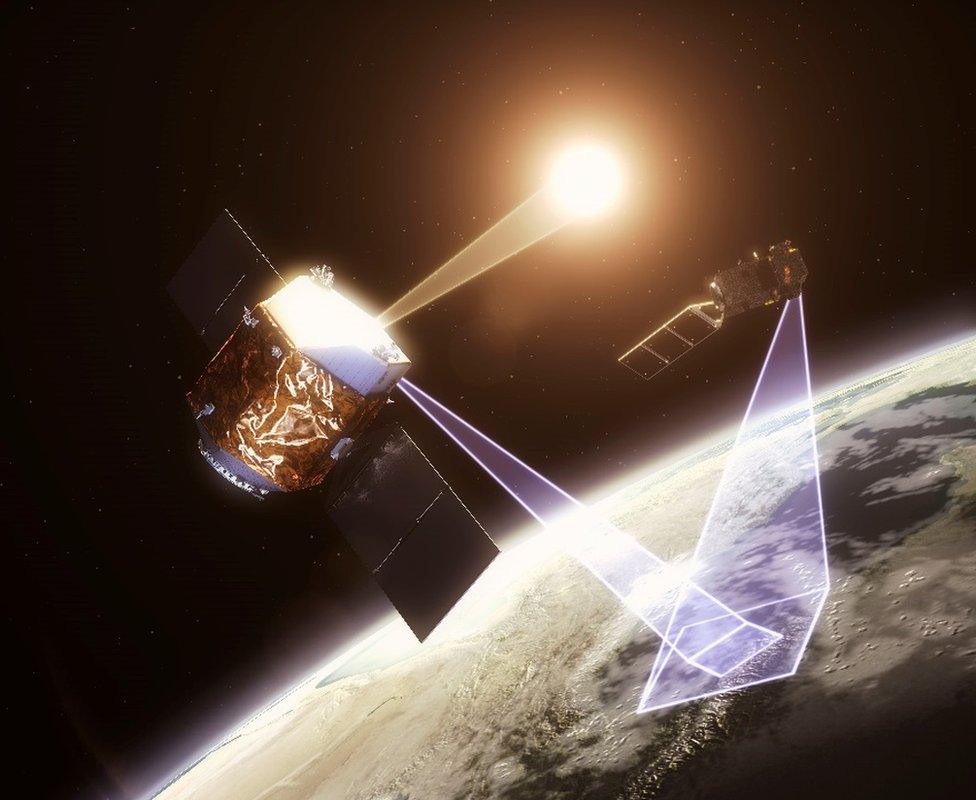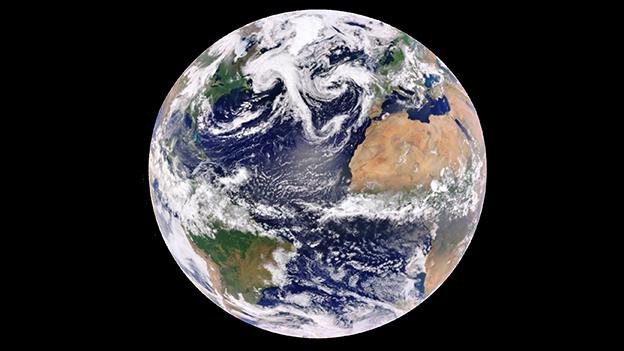Space mission to reveal 'Truths' about climate change
- Published
- comments

Artwork: Truths will work with other satellites to calibrate and validate their observations

The UK is going to lead a space mission to get an absolute measurement of the light reflected off Earth's surface.
The information will be used to calibrate the observations of other satellites, allowing their data to be compared more easily.
Called Truths, the new spacecraft was approved for development by European Space Agency member states in November.
Proponents of the mission expect its data to help reduce the uncertainty in projections of future climate change.
Scientists and engineers met on Tuesday to begin planning the project. Industry representatives from Britain, Switzerland, Greece, the Czech Republic and Romania gathered at Esa's technical centre in Harwell, Oxfordshire.
The agency has allocated €32.4m (£27.7m) for the initial design phase, with the scientific lead on the mission to be taken by Britain's National Physical Laboratory, external.
NPL is the UK's "keeper of standards".
It holds references for the kilogram, the metre, the second and all other units used in the international system (SI) of measurement.
The lab is the place you go, for example, if you want a precise description of the intensity of a light source, external - something it's able to gauge using a device called a cryogenic radiometer.
And the aim of the Truths mission is to get one of these instruments into orbit.
Working in tandem with a hyperspectral camera, the radiometer will make a detailed map of the sunlight reflected off Earth's surface - off its deserts, snowfields, forests and oceans.
The map should be of such exquisite quality that it's expected to become the standard reference against which all other imaging spacecraft will want to adjust and correct their own observations.
This ought to make it a much simpler task to compare the pictures from different satellites, not just from those missions flying today but also from the ones that have long since been retired and whose data now sits in archives.

Truths will take into orbit the primary standard used for the measurement of light
One of the other big goals of Truths is that in measuring the complete reflectance of the Earth globally, and doing it with such precision, it will establish a kind of "climate fingerprint" that a future version of the satellite, 10 to 15 years' later, can then resample.
"By doing that we'll be able to detect subtle changes much earlier than we can with our current observing system," explained NPL's Prof Nigel Fox.
"This will allow us to constrain and test the climate forecast models. So we'll know earlier whether the predicted temperatures that the models are giving us are consistent or not with the observations."
Invitations to tender for the design work will be sent out to industry shortly.
A grand plan for how to implement Truths must be ready for when the research ministers of Esa's member states gather for their next major policy meeting in 2022.
The feasibility work will also need to produce a full costing for the project, likely to be in the region of €250-300m (£210-260m).
Barring technical showstoppers, the ministers should then green-light the mission for a targeted launch in 2026.
Britain will almost certainly bear the majority of the cost of implementing Truths.
The UK has been its leading advocate.
"It plays to our strengths," said Beth Greenaway, the head of Earth observations and climate at the UK Space Agency. "NPL is remarkable. It does the standard time for the world; it does the standard metre. We like to think of ourselves leading on climate change so we should be providing the standard reference for Earth's radiation budget."
Truths is an acronym for Traceable Radiometry Underpinning Terrestrial- and Helio- Studies. It will be sensitive to light in the visible and near-infrared part of the electromagnetic spectrum.
Esa recently agreed to implement another UK-led mission called Forum which will map Earth's radiation at longer wavelengths in the far-infrared.
Jonathan.Amos-INTERNET@bbc.co.uk, external and follow me on Twitter: @BBCAmos, external

